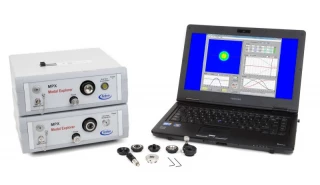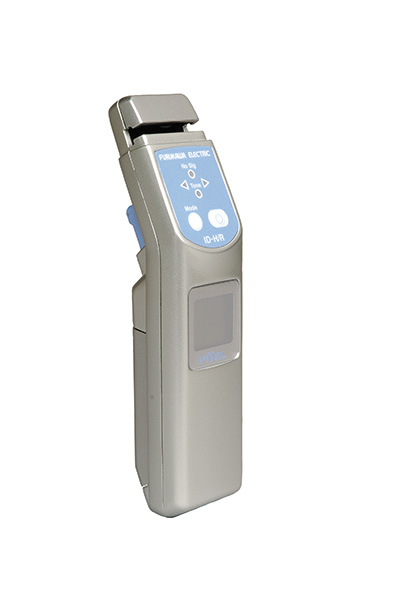Optical Fibre Diameter Analyser vs. Traditional Methods: Which is More Reliable?
Discover the Relevance of an Optical Fibre Diameter Analyser for Accuracy Measurements
The accuracy of optical Fibre measurements is critical in the telecommunications industry, where even the tiniest deviation in Diameter can lead to considerable signal destruction. An optical Fibre Diameter analyser functions as a vital device to guarantee these dimensions are accurate and constant, therefore enhancing overall system performance. Past the prompt advantages in quality and reliability, the ramifications of these dimensions encompass governing compliance and the improvement of innovation. As we take into consideration the evolving landscape of digital communication, the role of these analysers fit future requirements comes to be significantly pertinent. What exists ahead in this important area?
Recognizing Optical Fibre Diameter
Understanding the Diameter of optical fibers is critical for ensuring optimal efficiency in information and telecoms transmission applications. The Diameter directly affects the light-carrying capability of the Fibre, influencing both signal stamina and high quality. Optical fibres generally come in 2 major classifications: single-mode and multi-mode, each with distinctive Diameter specifications. Single-mode fibers typically have a smaller core Diameter, around 8 to 10 micrometers, enabling the transmission of light signals over longer ranges with very little loss. In contrast, multi-mode fibers feature bigger core diameters, typically in between 50 to 62.5 micrometers, which help with greater data transfer over shorter ranges.
The accuracy of Diameter measurements is important, as also minute variations can bring about significant disparities in efficiency. Factors such as making tolerances and ecological influences can impact the Diameter, necessitating constant and exact dimension techniques. In addition, standardization in Diameter specs makes certain compatibility between different Fibre kinds and ports, lowering the risk of system failings. As telecoms technology remains to advance, the need for trusted optical Fibre Diameter analysis ends up being significantly paramount, underscoring the significance of utilizing innovative dimension devices and methodologies to maintain premium communication networks.
Advantages of Accurate Measurements
Precise dimensions of optical Fibre Diameter are essential for optimizing network performance and integrity. The integrity of optical signals is straight influenced by the uniformity and precision of Fibre sizes, as disparities can lead to raised attenuation and signal degradation. By ensuring that the Diameter of optical fibres is consistently measured within defined resistances, operators can lessen losses and enhance general transmission high quality.
Moreover, precise Diameter assessments contribute to reliable Fibre splicing and connectorization. Mismatched sizes can result in bad coupling performance, leading to boosted insertion losses. This precision is especially vital in high-speed networks, where even minor inconsistencies can have significant impacts on information transmission prices.
Additionally, keeping stringent criteria for optical Fibre dimensions help in compliance with market laws, guaranteeing that products satisfy needed specifications. optical fibre diameter analyser. This not just strengthens consumer confidence yet also boosts the track record of makers and company in the affordable telecommunications landscape
Inevitably, the advantages of accurate measurements expand beyond immediate performance gains; they cultivate long-lasting integrity and sturdiness of network facilities, paving the means for future innovations in optical communication innovation.
Applications in Telecommunications
The applications of optical Fibre Diameter analysers in telecoms are crucial for guaranteeing ideal network performance and effectiveness. optical fibre diameter analyser. These analysers play an important role in the manufacturing, setup, and maintenance of optical Fibre wires, where exact measurements of Fibre Diameter significantly affect original site the overall efficiency of communication systems
In telecommunications, maintaining uniformity in Fibre Diameter is crucial for decreasing signal loss and making the most of transmission top quality. Variations in Diameter can result in raised depletion and lowered bandwidth, affecting data transmission prices. Optical Fibre Diameter analysers allow service technicians to keep track of and manage these dimensions throughout the manufacturing procedure, making sure that the fibres meet strict specs.
Moreover, during installation and upkeep, these tools assist in validating that the set up fibers comply with the called for criteria, thus avoiding possible failings in communication infrastructure. By using optical Fibre Diameter analysers, telecommunications companies can enhance their service reliability and customer complete satisfaction.

Quality Assurance Specifications
In the realm of optical Fibre manufacturing, adherence to high quality control requirements is vital for making sure the integrity and performance of interaction systems. The precision in optical Fibre Diameter is important, as variants can significantly affect signal honesty and overall system efficiency. Suppliers have to implement stringent quality control steps throughout the production process.

By sticking to established high quality control requirements, manufacturers not only improve the efficiency of their optical fibers but likewise make certain customer fulfillment and trust fund. Ultimately, robust high quality control methods are essential to the success of optical Fibre manufacturing and the development of communication innovations.
Future Trends in Measurement Innovation
As the need for high-performance optical fibers intensifies, precision measurement tools will become significantly essential. By incorporating real-time data and innovative sensing units analytics, makers will be able to monitor Fibre Diameter variations with unprecedented accuracy.
Additionally, the consolidation of non-contact measurement strategies, such as laser triangulation and optical comprehensibility tomography, will reduce the threat of contamination and physical damage to optical fibres during evaluation. These advancements promise to simplify quality assurance processes, making sure that just the most reputable products get to the market.
Sustainability will certainly likewise play a vital role in future dimension Website technology. Energy-efficient systems and recyclable materials will be focused on, aligning with international environmental criteria. Furthermore, the fostering of Industry 4.0 concepts will assist in seamless combination of measurement innovation within smart manufacturing ecosystems, permitting for continuous enhancement and rapid advancement.
Conclusion
In verdict, the optical Fibre Diameter analyser offers as a critical instrument for guaranteeing precision in telecoms. These analysers not just sustain top quality control standards yet likewise foster consumer confidence in optical Fibre modern technologies.
The precision of optical Fibre measurements is vital in the telecom market, where even the slightest discrepancy in Diameter can lead to considerable signal deterioration. An optical Fibre Diameter analyser serves as a vital tool to guarantee these measurements are precise and consistent, thereby boosting total system efficiency. As telecoms innovation continues to evolve, the need for reliable optical Fibre Diameter evaluation ends up being progressively critical, underscoring the importance of using innovative measurement tools and methodologies to keep top notch interaction networks.
Accurate dimensions of optical Fibre Diameter are crucial for enhancing network performance and integrity. Optical Fibre Diameter analysers make it possible for service technicians to keep track of and control these dimensions throughout the manufacturing procedure, making sure that the fibres fulfill rigid specifications.